INTRODUCTION
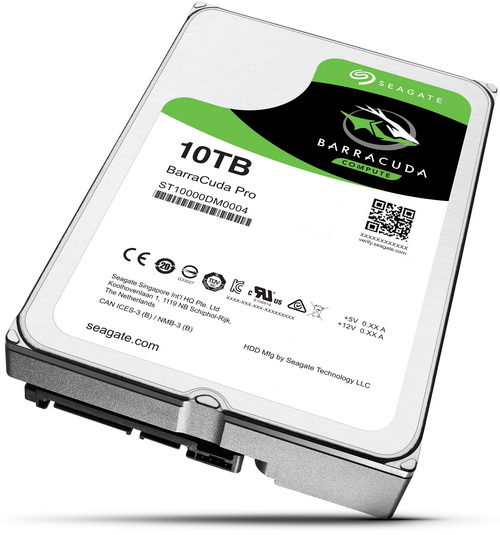
Whenever we receive one of the latest HDD models to hit the market with the highest storage capacity available i always think back to the time when even 380MB models were more than enough to cover all our needs. The arrival of optical drives (CDs followed by DVDs and Blu-Rays later on) and of course the internet changed all that so thanks to several technological advancements today many people around the world enjoy speeds that allow them to download hundreds of GB per day. Unfortunately this also means that people can max out a 2TB hard disk drive inside under a week so such fast download speeds may be very useful and even impressive at times but are also actually a double edged sword due to high storage demands. Seagate recently launched their brand new Guardian line of HDDs and after the NAS oriented IronWolf 10TB model today we'll be taking a very thorough look at the BarraCuda Pro 10TB one.
Founded in 1979, Seagate is the leading provider of hard drives and storage solutions. From the videos, music and documents we share with friends and family on social networks, to servers that form the backbone of enterprise data centers and cloud-based computing, to desktop and notebook computers that fuel our personal productivity, Seagate products help more people store, share and protect their valuable digital content. Seagate offers the industry’s broadest portfolio of hard disk drives, solid-state drives and solid-state hybrid drives. In addition, the company offers an extensive line of retail storage products for consumers and small businesses, along with data-recovery services for any brand of hard drive and digital media type. Seagate employs more than 50,000 people around the world.
Although currently only available in 6/8/10TB capacities (only the base BarraCuda model is available in 500GB/1/2/3/4TB capacities) just like the IronWolf 10TB model the new BarraCuda Pro 10TB HDD is a Helium (due to its density Helium allows for thinner platters and reduced motor power) based drive which uses a combination of 7-platters that spin at a rotational speed of 7200RPM and 256MB of cache. Seagate has also implemented their multi-tier caching technology (MTC Technology) to boost random write performance, PowerChoice technology for power savings and has chosen to use Perpendicular Magnetic Recording (PMR) instead of the usual Shingled Magnetic Recording (SMR) technology which we've seen quite a lot lately (probably for increased write performance). As far as numbers go Seagate covers the BarraCuda Pro 10TB with a 5-year limited warranty and reports that the drive uses up to only 6.8W while in operation, can achieve 220MB/s of sustained data transfer rate (although on the specs sheet Seagate states 210MB/s) and has an endurance rating of up to 300TB per year or 820GB per day at 24x7 usage (the drive also has a reported MTBF of 1 million hours).
SPECIFICATIONS AND FEATURES

THE BARRACUDA PRO 10TB
Once again our sample arrived inside a clear plastic enclosure without any SATA cables and user guides like in the retail version.
This time however our sample was placed inside a static-free bag.
3.5” drives are identical in size so nothing new in that area between the BarraCuda 10TB and other 3.5” HDDs.
As expected the BarraCuda Pro 10TB uses the same smooth and cool enclosure as the IronWolf 10TB model (zinc alloy?).
As usual at the rear we see a small PCB with all the modules placed on the other side for increased protection (we also see the same empty spot on the upper right corner which may one day be used for extra cache (or for an SSHD model).
Four pins (probably used for firmware updates) and the usual SATA power and data connectors are located at the rear of the drive.
TEST BED


TESTING METHODOLOGY
Thoroughly testing hard disk drives may require time and patience but that's just about it. Of course that doesn't mean that one must take it lightly, at least not when people base their decision on your results. True some choose to only use 2 or 3 benchmarking suits in order to measure the performance of a drive or drives since quite honestly most benchmarking suites do tend to agree with each other (so it's not really wrong) but we always like to take things a step further not because we have to but because we want to be almost 100% certain of the results we get and post in our charts.
So in this kind of reviews we will use a total of 7 different benchmarking suites in an effort to bring you the most accurate results across the board. Now the only reason why i say effort is because real-world usage is not always on par with what results one gets by running several benchmarks on a drive and that's mainly because there are many variables at work from ambient temperatures to hardware configurations and even firmware versions. The benchmarking applications we use are the AIDA64 suite (former Everest Pro), HD Tune Professional (as of October 2016 we also record seek times), HD Tach RW, ATTO, Sisoftware Sandra Pro, Crystal Disk Mark 64bit and the PCMARK 7 (secondary storage suite). These benchmarking tools are the best in what they do and as you will also see later on their results more or less agree. Each test is performed a total of 6 times and then the average is recorded into the charts. Temperatures are recorded using Hard Disk Sentinel and after 45 minutes of continuous testing in a 23 degrees Celsius temperature controlled room. Finally we also use an ExTech HD600 dBA meter on each of the drives (5cm away) in order to accurately record their noise levels (during access), although if you don't turn off all system fans when doing so it's quite possible that you will never even hear the drive. The operating system as usual is a fresh installation of Microsoft Windows 7 Ultimate Service Pack 1 with every update installed up until the 13th of October 2016.
TEST RESULTS - AIDA64 / ATTO
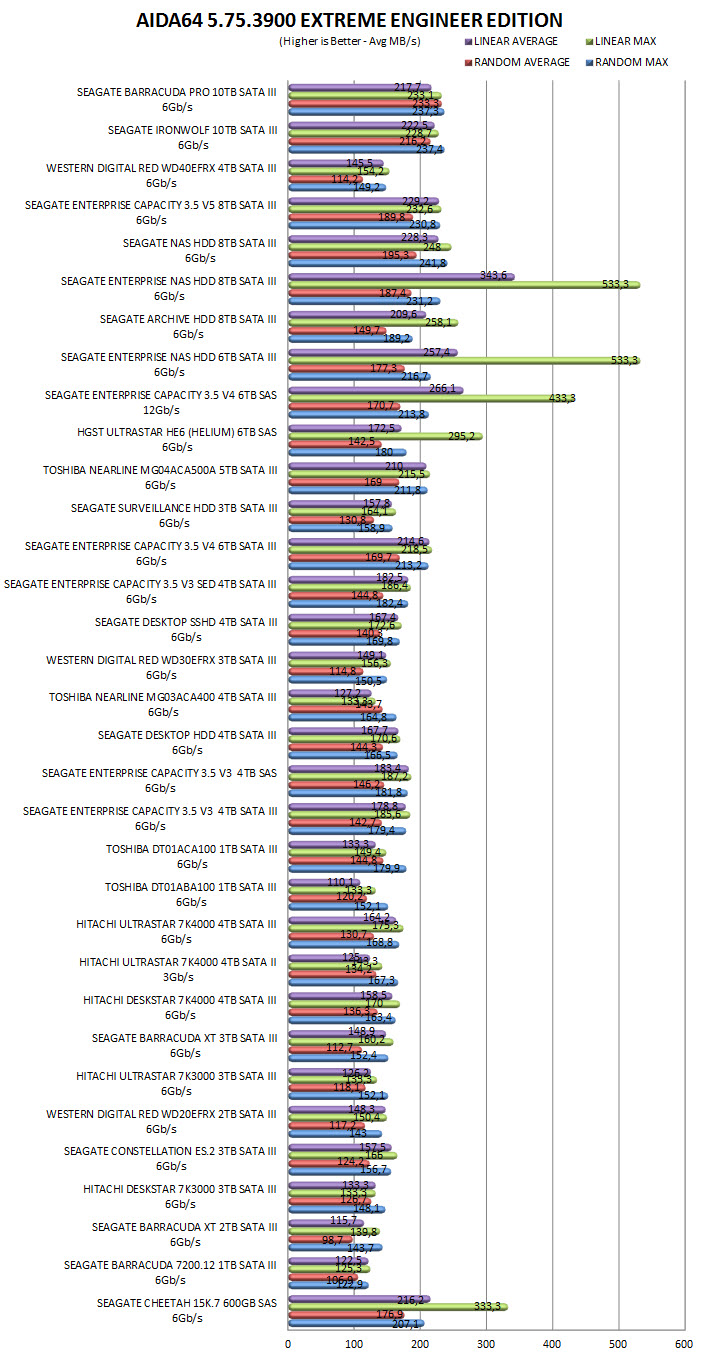
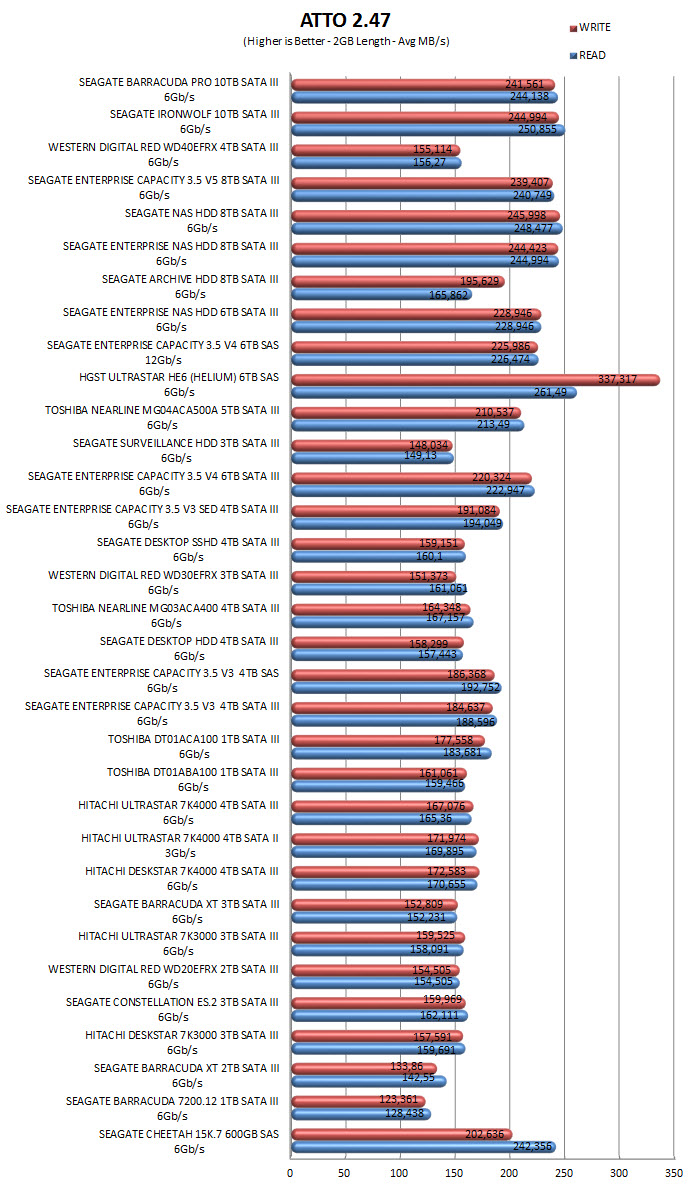
TEST RESULTS - HD TACH RW / HD TUNE PRO
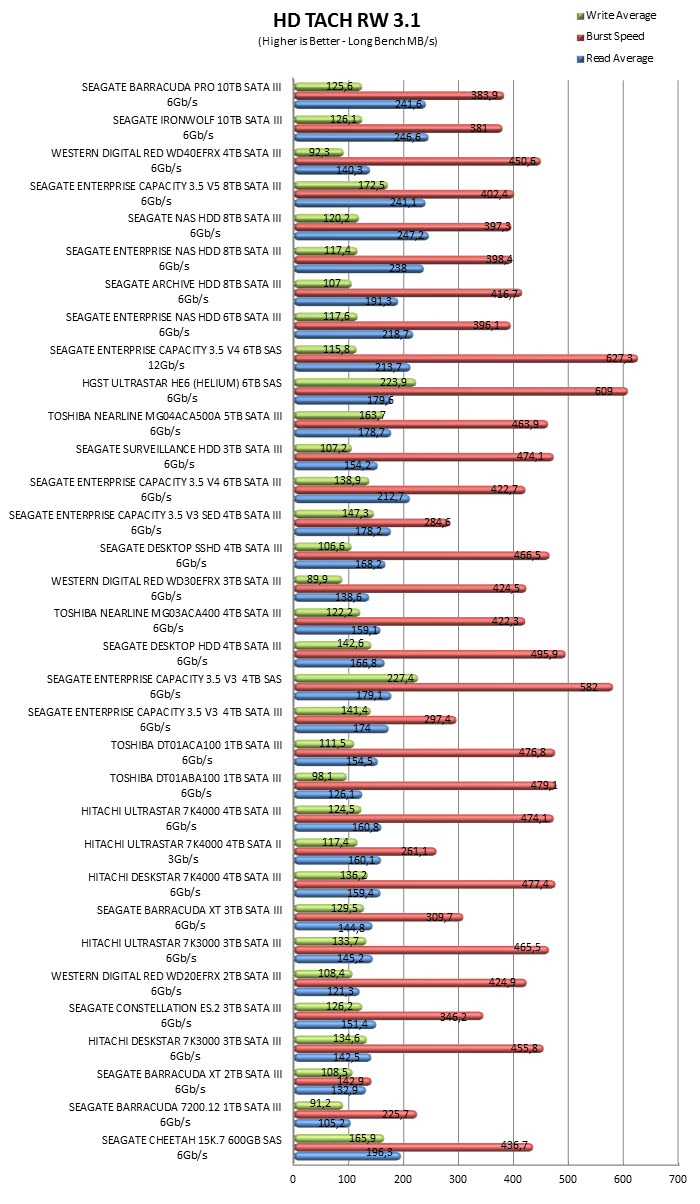
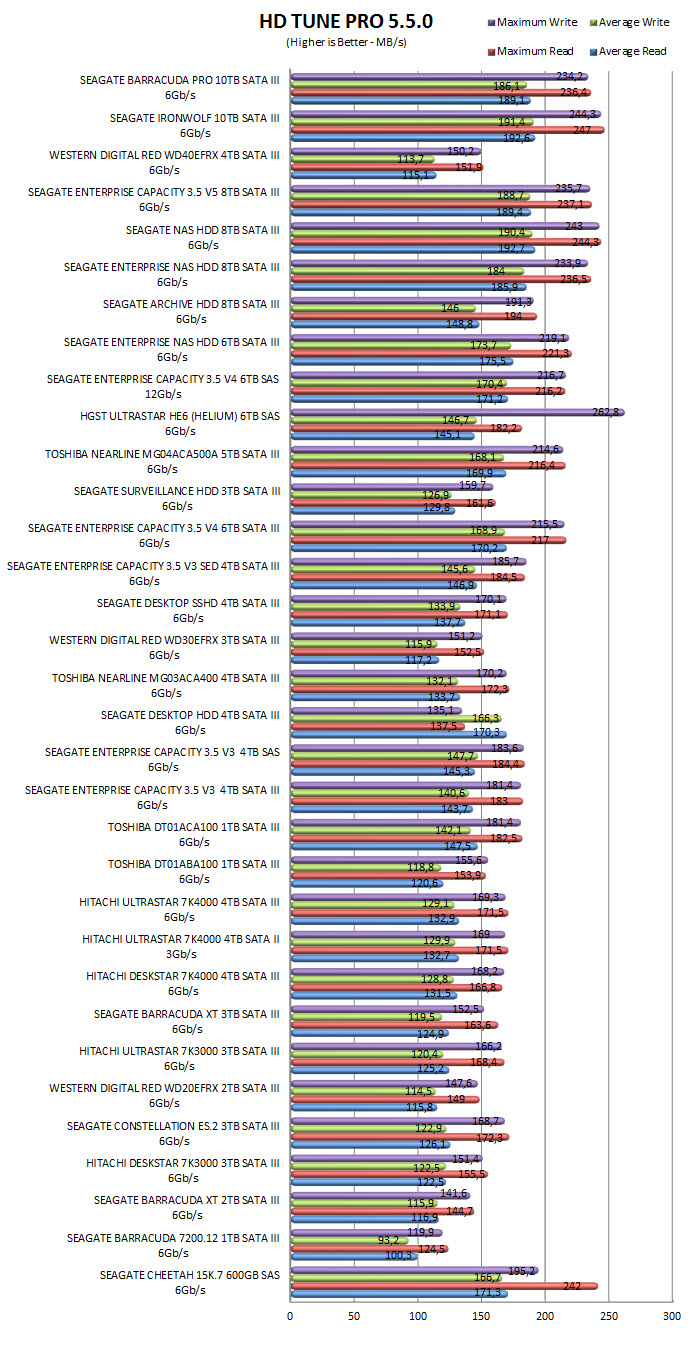
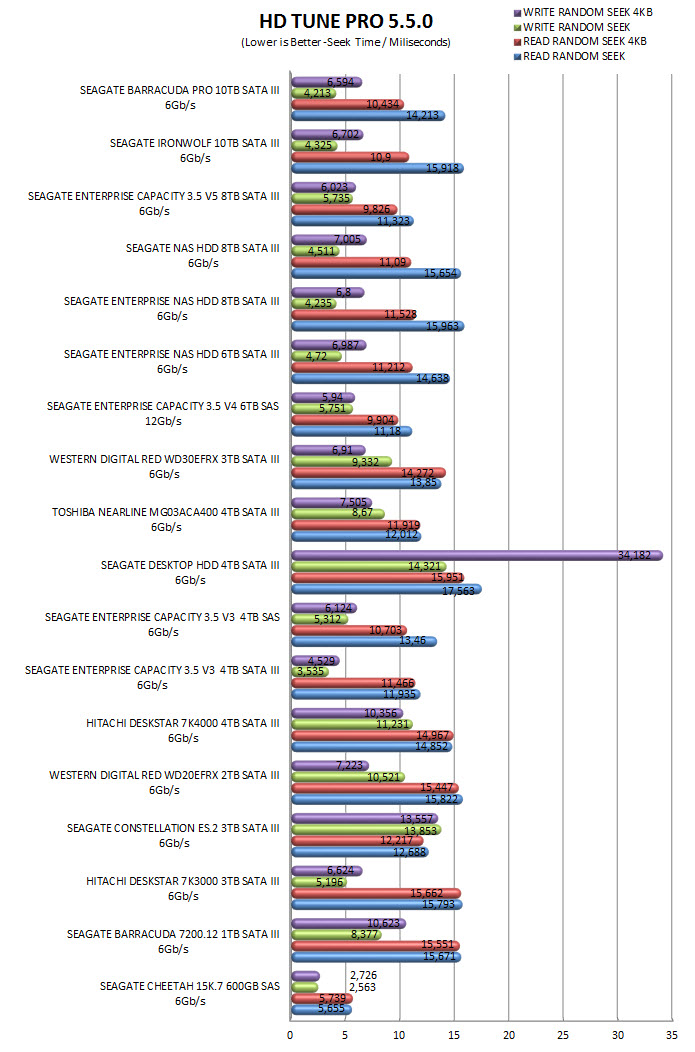
TEST RESULTS - SISOFTWARE SANDRA PRO / CRYSTAL DISK MARK X64
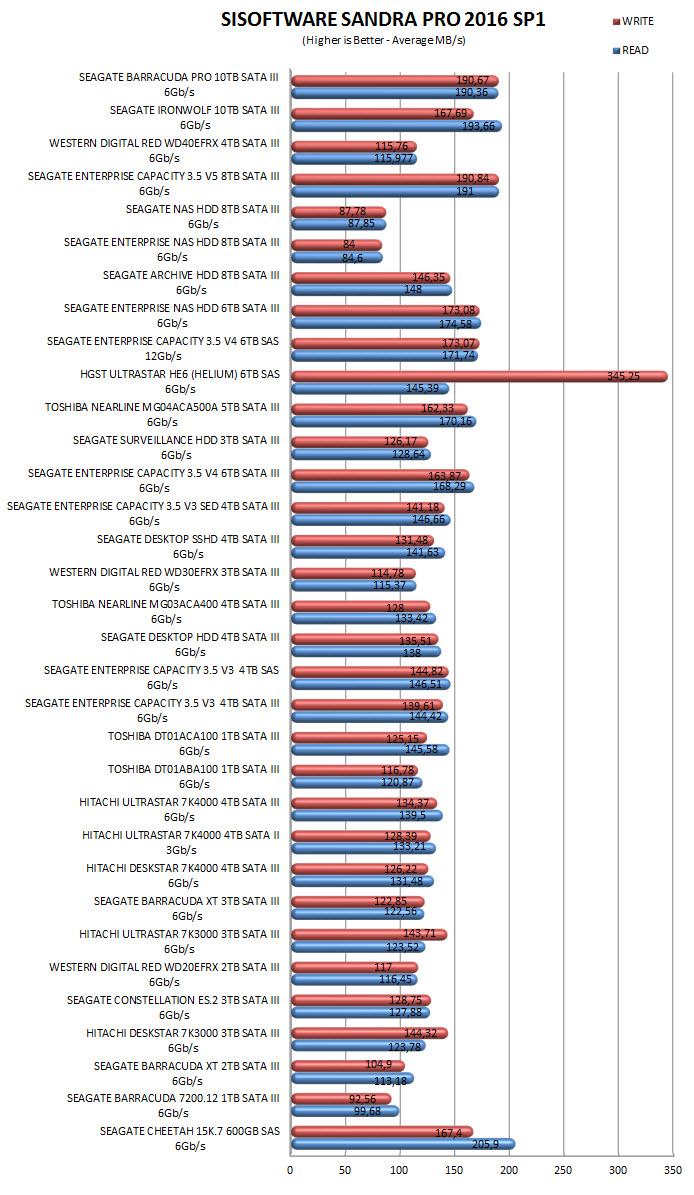

TEST RESULTS – PCMARK 7 / TEMPERATURES / NOISE LEVELS
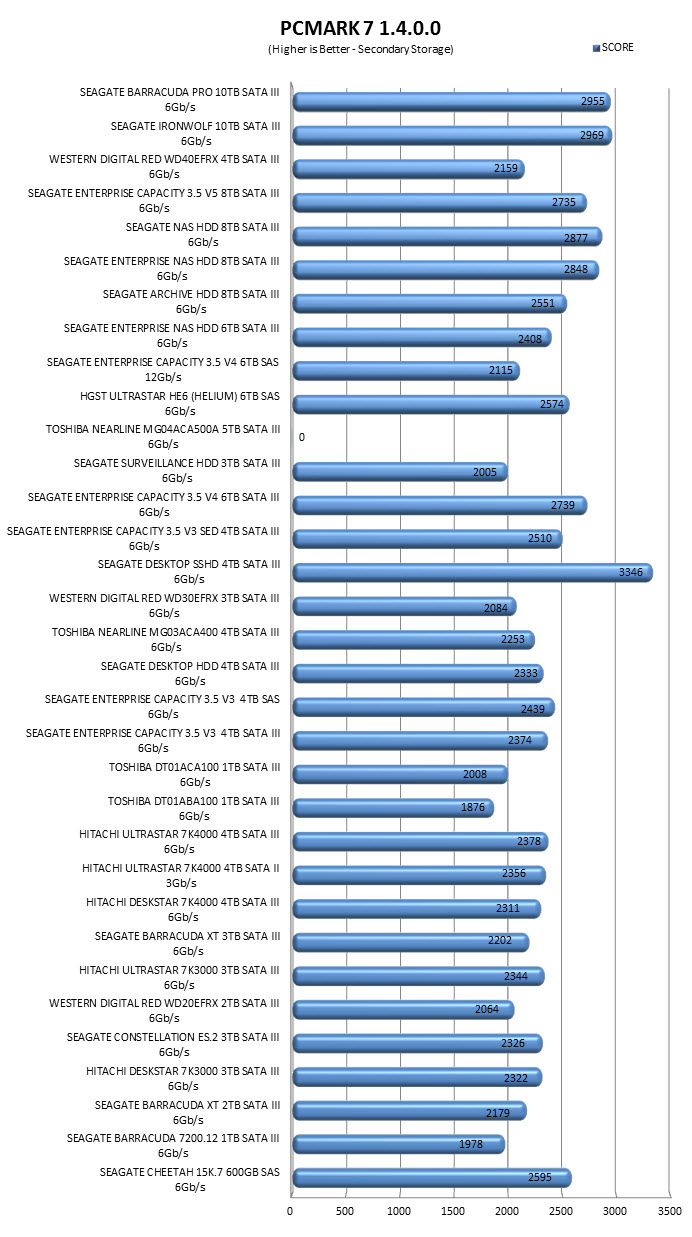


CONCLUSION
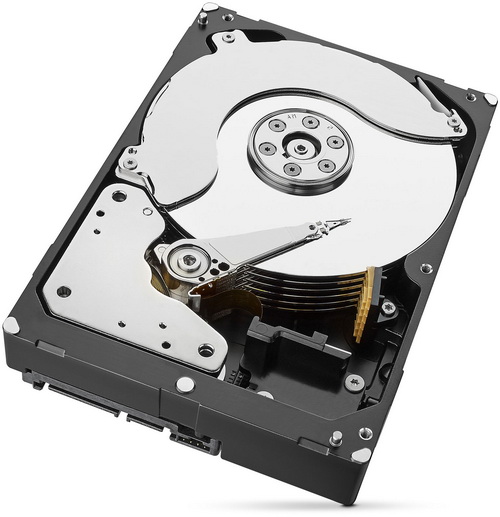
The new BarraCuda Pro 10TB HDD by Seagate has far too many similarities with the IronWolf 10TB model so we never really expected it to do much better and just looking out our charts you can see that this is partially true. Both drives feature rotational speeds of 7200RPM, are based on a 7-platter design, use enclosures filled with Helium, consume up to 6.8W at load and have 256MB of cache. With that in mind whatever difference in performance we encountered it was basically because of the difference in the implemented technologies since both drives are aimed at different target audiences. So whereas the IronWolf is aimed towards NAS use and thus features several technologies developed for such use the BarraCuda Pro is aimed towards desktop use and thus focuses a bit more in the performance end. Worth mentioning is that based on the specifications sheets of both drives (300TB vs 180TB per year and 5 vs 3 years warranty) it becomes somewhat evident that the BarraCuda Pro is not really the equivalent of the IronWolf drive but rather the upcoming IronWolf Pro so do take that into account prior to comparing these two. Also as you may have noticed since some of you asked we gathered every single drive we have here to record their seek times and although differences are somewhat tiny between equivalent models we do feel it’s a good addition to our charts.
So just how much must you spend to get yourself one of the highest capacity and best performance HDDs in the market today? Well with a current price tag set at USD559.98 inside the USA (Amazon.com) and at 551Euros inside the EU (Amazon.co.uk) the BarraCuda 10TB HDD is certainly not cheap but we feel it’s worth every single penny. Of course if you don’t care about having the best possible write performance and you want a 10TB drive purely for storage purposes you might want to go with the IronWolf 10TB HDD instead and save roughly USD100/100Euros in the process (the choice is yours). Personally I can’t wait to check and see what the upcoming IronWolf Pro 10TB model is capable off but for now the BarraCuda 10TB is the fastest one of its kind and clearly worthy of our Platinum Award.

PROS
- Build Quality (300WRL / 1 Million Hours MTBF)
- Excellent Read & Write Performance
- 256MB Cache
- 10TB's Capacity
- Temperatures / Noise Levels / Power Consumption
- Enclosure Material (Low Temperatures)
- 5 Year Limited Warranty
CONS
- Price (For Some)

 O-Sense
O-Sense





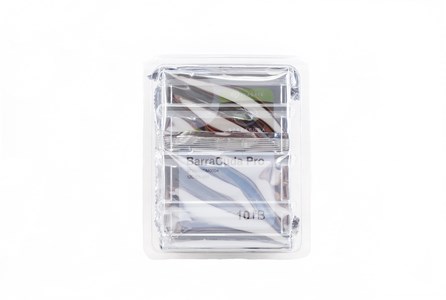
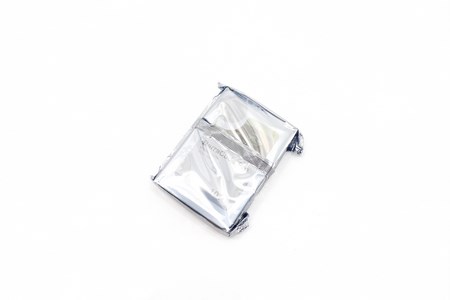
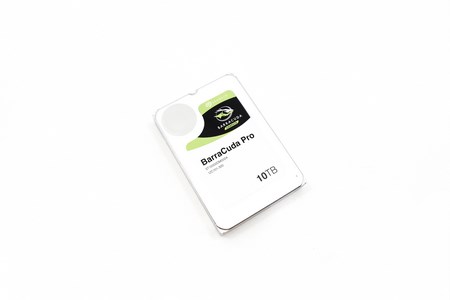


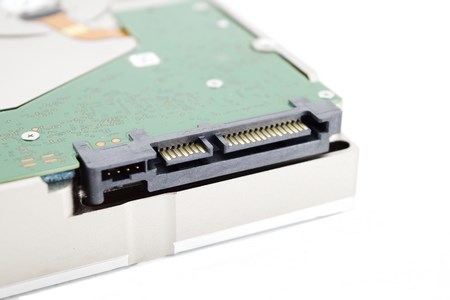


.png)

